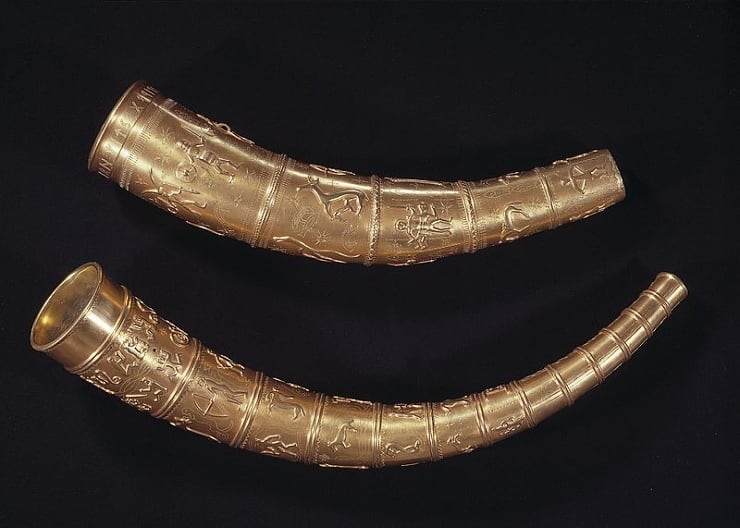21 Aug 2007 Danish police find gilded horns
Categories: Calendar , Nálezy nejenom s detektorem ve Skandinávii

Two precious gold horns were stolen by thieves in Denmark fourteen years ago. They were replicas of artefacts from 400 AD, decorated with images of gods and animals. The second horn also has an inscription in Old Germanic runes.
One of the Bronze Age horns was found on 21 April 1734 by farmer Erik Lassen in south-western Denmark. It was located approximately twenty metres from the place where Kirsten Svedatter accidentally discovered the first horn in 1639.
They were then lost and found again in 1734. But in 1802 they were stolen from the Royal Chamber of Arts by the indebted jeweller Niels Heidenreich. He ruthlessly melted down the gold to obtain material for jewellery and fake coins. Denmark subsequently decided to produce exact gold replicas.
Thieves also sought these out. In 2007, the horns were stolen in the town of Jelling by a trio of perpetrators, but the police managed to track them down.
"We detained three people at Horsens station and discovered the two horns and other loot in their luggage," a police inspector said at the time.
Gallehus horns are truly exceptional, and have fascinated artists. The Danish poet Adam Oehlenschläger wrote a romantic poem about them. They also inspired the painter Harald Slott-Møller.
The horns were made of two layers of gold. The inner one is of lesser quality because they used an alloy of gold and silver. For the outer part only pure gold. The horns are decorated with figures and both are over seventy centimetres in length. They weigh around three kilos. At their widest part they are over ten centimetres in diameter, with one of the horns being slightly smaller.
This is really precise work. The figures depicted on the corners are different. Two of them, for example, are wearing a mask, holding a sword and a shield. In addition to the main figures that protrude from the surface, we can see other ornaments on both pieces. For example, different kinds of animals that are being chased.
Countless experts have tried to interpret them. Most have concluded that they are connected to the Germanic migration.
Sources: www.skandinavskydum.cz, www.tyden.cz, www.bbc.com
The article is included in categories: